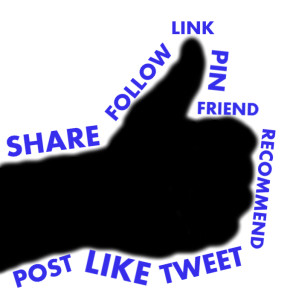by Carol Springer | Oct 31, 2016
As a sales outsourcing company, that specializes in building sales automation engines, we work remotely from our clients. One key ingredient of our sales engines is the ability to use content to prove to buyers that the product we are selling solves a problem for them. And over the past several years we have discovered that nothing is more valuable than video. And when creating videos, regardless if it is our team, or their team creating the content, we have one major rule.
Rule # 1 – Keep it Simple
People buy products and services because they want to solve a problem. That’s it.
Rule # 2 – Address Buyers Problems
We have found over the past several years of video production and distribution that videos that perform the best supporting our client’s sales outsourcing reps, our lead scoring, and our content marketing are the ones that offer solutions to a problem. This is especially helpful for lead scoring because if a buyer has watched the video you know they may have this pain.
The problem could be as simple as, “When launching an email campaign, I want to get notified when someone clicks a link in the email.”
Company X could make a short video that shows a marketing team launching an email campaign, and sales people are getting emails to follow up with leads.
Now, that sort of video documentation is way more interesting than a text explanation of the technology. Some other ideas for problem-solving with video marketing. Here is one that shows how lead scoring helps callers:
- Create video content with happy clients or customers (remember, they don’t have to be long to be compelling 1-2 minutes) offering short testimonials.
- Create easy to follow videos for each step of your product implementation, especially if it’s a software program
- Create a weekly webisode series that shows your company’s spokesperson running into daily life issues that are solved with your product or service. This could be the office “talent”, so someone that is camera-ready is preferable.
This leads in to my next point….
Micro-Video Strategy Applications
Let’s face it, there are moments in your daily experiences that people like to see. These are the most interesting and compelling content that you can capture, and the challenge is knowing how to identify it. Which we will get into later.
With attention spans plummeting, now is the time to begin developing a short-form content strategy that blends with your overall content strategy. This is very applicable to your micro-branded products or services.
At Company X, for example, John has started a new 3-minute video webisode series where he talks about everything marketing and sales. The great thing about Joe is that he is able to record each video on his iPhone, and no one expects anything more from the production value because it’s more about the thought leadership he provides.
Video content can also be used to automate the explanation of products, services, and customer problems to help make it easier for buyer to buy:
- For Example turn your sales reps initial intro pitch deck (that takes 10 15 minutes to present live) into a simple to produce explanation video that talks about the current situation in the market, the problems this creates and how you solve the problem. It’s mini webcast on speed – part educational and part quick intro to the solution. Here is one we crafted for our tradeshow support package
If you can identify all of the moments that might need explaining, and make a short video about each, you’ll be able to create a video strategy that is built specifically for that pain point.
Remember, people have different problems they need solved. It is your job as the marketer to identify those problems with your sales team.
They will love you for addressing their questions and/or problems quickly and succinctly, without having to sift through pages of blog content.
Remember the things to keep at the top of your mind to create the compelling video for your product or service is pain points.
Ask yourself these questions: “Is this something that someone else would find valuable? How long did it take me to figure this out, and will it help someone else reach this conclusion quicker?”
At Gabriel Sales, we have created a video production workshop that will help you create compelling content that will help amplify your sales tactics, support out sales outsourcing reps to share and to create a video library for your potential customers and clients that they will love.
To learn more about how Gabriel Sales can help you to tell your sales story powerfully to as many buyers as possible using our sales outsourcing and sales automation services please visit our strategy and sales outsourcing services page. To decide if our team is the right one for you please visit our About Us page.
by gabriel_sales | Jul 25, 2014
 This is part 2 of a blog series on ways to be more effective with B2B social media marketing. Click here for part one.
This is part 2 of a blog series on ways to be more effective with B2B social media marketing. Click here for part one.
2. Pay attention to your metadata
When most people think of content metadata, they are thinking about SEO. However, metadata can also be a big part of what drives engagement on social media. Many companies today post blog content without specifying an ‘exerpt’ or ‘meta description’ to be displayed on social media sharing sites. These small details, like the title of the article and the quick blurb that describes what its about, can really make a huge difference when it comes to engagement.
To learn more about sharing best practices and how to optimize your content to generate sharing, check out these tips from Facebook.
3. Use visual information like infographics and video
If your in B2B marketing currently, you’ve likely been a witness to the amazing rise on popularity of visual content over the last few years. The huge amount of visual marketing content like infographics, videos, webcasts, Slideshare presentations, etc. out there today shows that companies are finding success with this approach. A recent blog from Atomic Research suggests that one reason for this may be that “Your brain processes images faster than text and attaching a graphic to your content can create a mental foothold for your audience, which will result in reads, clicks and leads.”
This means that anything you can do to make your content more visual will likely make it more engaging for your audience on social media. For more tips on creating visual content, you can check out Atomic Research’s article here. For more on video in B2B, you can read last week’s blog that discusses recent barriers to success.
For more tips on B2B social media marketing, you can read 3 Ways to Use Twitter More Effectively for B2B Marketing.
by gabriel_sales | Jul 24, 2014
 In March, a story came out that found that stated the average American adult now spends 11 hours with digital media a day. While some of that time may be spent doing tasks like sending emails or surfing news sites, a 2014 marketing survey found that “than one in four minutes spent (28%) using smartphones is using social networking apps.”
In March, a story came out that found that stated the average American adult now spends 11 hours with digital media a day. While some of that time may be spent doing tasks like sending emails or surfing news sites, a 2014 marketing survey found that “than one in four minutes spent (28%) using smartphones is using social networking apps.”
Because consumers now spend more time than ever before interacting with digital devices and engaging in all types of digital content, it is no surprise that the social media marketing industry is still growing at a near exponential rate. With so many businesses now competing for their customer’s attention via digital devices and social media, it can be hard for smaller B2B companies to break through the noise and generate real value from social media marketing.
To help you be more effective with your B2B social media marketing efforts, here are three things that we see to be working right now:
- Get active on Google+
Most people have heard this by now, but in case you haven’t, it is worth repeating. Google’s social platform, Google+, is now arguably one of the most important social media platforms for business. This is in part because of the close relationship between +1’s (Google+’s version of ‘likes’) and high rankings on Google’s regular SERPs. Essentially, the more +1’s and shares a piece of content gets on Google+, the higher it will rank in Google overall.
For more tips on using Google+ in B2B, you can check out this infographic that has great step-by-step instructions for getting started and offers advice on what types of content to share, how to find influencers and more.
Continue reading the second half of this blog.
by gabriel_sales | Jun 19, 2014
 On the internet, you run into a lot of different types of people: bloggers, shopping addicts, trolls, information junkies, conspiracy theorists, hackers; this list goes on and on. However, in terms of commercial activities, there are generally only two types of people you need to pay attention to: searchers and sharers.
On the internet, you run into a lot of different types of people: bloggers, shopping addicts, trolls, information junkies, conspiracy theorists, hackers; this list goes on and on. However, in terms of commercial activities, there are generally only two types of people you need to pay attention to: searchers and sharers.
Searchers and sharers are different breeds. One lives on SERPs and the other on social platforms. They also have different desires, different motivations and different end goals.
Searchers
People who access content via search engines are looking for something specific. They have a specific question in mind and want the answer to that question now. They don’t want to have to scroll through endless text on to find the one detail they want; they would prefer it if their answer is in the first sentence of the webpage.
In terms of marketing content, this means that searchers want information to easily locatable and extremely clear in terms of meaning. Titles can play a big role here as having the right keywords in your title is still a big factor in terms of where you rank on SERPs. Additionally, when designing content for searchers, ask yourself, “Does this content thoroughly and accurately answer a question my target demographic might have?” If so, you’re on the right track.
Sharers
Those who access your content via social media are generally in a very different headspace than people who are searching. People who search are usually thinking, “I need to find this answer. Now.” Conversely, people who are on social media might be thinking, “Please distract me from how bored I am at work,” or “I need a break. Let me check my Facebook.” People on social media, or ‘sharers’, usually do not have a pressing need when accessing marketing content and are looking to be distracted or entertained in some way.
The content that will best engage sharers is therefore going to be slightly different than the content that engages searchers. You can take a little bit more creative liberty with your titles for sharers, as the best optimized titles for SEO aren’t necessarily the most human-friendly and attention-grabbing. Finally, sharers also want content that educates or provides enough entertainment value to warrant actual ‘sharing’—so here is the chance to let either your intellect or personality shine.
For more tips on creating B2B content for SERPs and social, read 3 Tips to Improve B2B SEO in 2014. Feel free to contact us with any questions.
by gabriel_sales | Jun 9, 2014
 In recent years, web technologies and digital sales tools have dramatically impacted the way people buy and sell. While many of these technology-related solutions have allowed companies to increase efficiency and improve targeting, they can also seem a bit dehumanizing for your prospects who can tell that machines are interacting with them—not people.
In recent years, web technologies and digital sales tools have dramatically impacted the way people buy and sell. While many of these technology-related solutions have allowed companies to increase efficiency and improve targeting, they can also seem a bit dehumanizing for your prospects who can tell that machines are interacting with them—not people.
In order to retain the efficiency improvements these digital marketing technologies like marketing automation offer while not seeming like a robot to your prospects, here are three ways to make your marketing automation seem more human:
1. Program follow-up emails to go out at the right time.
Consumers today are now getting used to auto-responder emails, which can sometimes come across impersonal and uncaring. While the argument over the ‘best’ time to send a follow up email will probably never end, you can at least set up your emails to make it seem like a human is sending them. By setting up a follow up email to go out 15 minutes after a link was clicked or request for information was made (instead of 1 second after), you can least seem like you took the time to write out a personal email.
2. Schedule social posts for appropriate times of day for your business.
A lot of B2B companies are using marketing automation platforms or other digital marketing tools to schedule and automate posts on various social media platforms. This is a great practice, as you are able to schedule posts in large chunks rather than having to remember to do it throughout the day/week. However, B2B companies should be careful to watch when they are scheduling posts; it doesn’t make sense for a company selling project management software to be tweeting at two in the morning. B2C companies and global brands can get away with this; but for B2B companies to seem more human, they should generally keep their posts within normal business hours.
3. Respond to followers, friends, fans and other commenters.
While scheduling your social media posts is a great practice, not responding to those who engage with your posts will definitely make you seem like a robot (or just plain rude). Even though you have set up your social posts to run on their own, you should check your social platforms every so often to see who has engaged with you, and respond accordingly.
For more on B2B marketing automation, read 3 Things B2B Marketers Should Always Automate. Feel free to contact us with any questions.
by gabriel_sales | Mar 10, 2014
 In late February, LinkedIn began rolling out a new publishing platform. While its impact in the world of content marketing remains to be seen, here is what you need to know:
In late February, LinkedIn began rolling out a new publishing platform. While its impact in the world of content marketing remains to be seen, here is what you need to know:
What
“LinkedIn is opening up our publishing platform to our members, giving them a powerful new way to build their professional brand. When a member publishes a post on LinkedIn, their original content becomes part of their professional profile, is shared with their trusted network and has the ability to reach the largest group of professionals ever assembled. Now members have the ability to follow other members that are not in their network and build their own group of followers. Members can continue to share their expertise by posting photos, images, videos and their original presentations on SlideShare.” ~ LinkedIn
Why
“One of our big, strategic bets for the company is for LinkedIn to become the definitive, professional publishing platform,” says Ryan Roslansky, Head of Content Products at LinkedIn. “We do this because we want LinkedIn to be the place where members can become productive, successful professionals – not just when you’re trying to find a job, or search for another person.”
In other words, LinkedIn needs a hook that would make it more of a daily or at least a weekly destination for end users, rather than a place you go to update your resume when looking for work.” ~TechCrunch
How
Once you have been given permission to publish on LinkedIn, the process for publishing is extremely simple. Here are the directions from LinkedIn:
- In the Share an update box on your LinkedIn homepage, click the Edit icon. This takes you to the writing tool.
- Write your post. To include visuals:
- Click the camera icon in the tools panel on the right.
- Click Browse in the box that appears.
- Select the file you’d like to upload and click Submit.
- Click Publish, Save, or Preview in the lower right.
- Click Close in the lower left to leave the writing tool
You can find many more answers to publishing questions here and a list of best practices here.
For more on using LinkedIn for B2B, read Using LinkedIn for B2B Marketing. Feel free to contact us with any questions.






